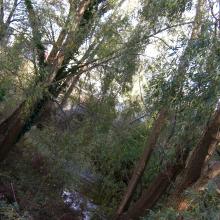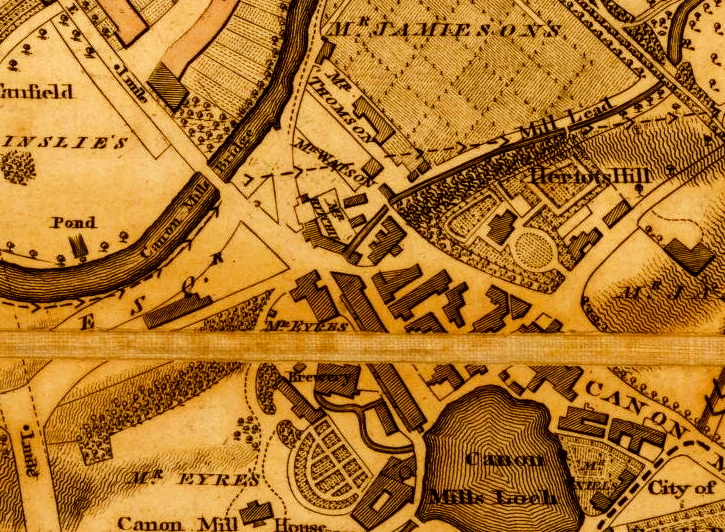
Readers with an historical bent may be interested in viewing the painting linked here. Reader John MacDonald has rediscovered it in the the newly refurbished Scottish National Portrait Gallery in Queen Street.
'I had seen a black-and-white copy of this picture before,' MacDonald told us, 'but it was nice to come across the original in the gallery.
'The landscape, by John Knox (1778–1845) – no relation to the Reformation figure – was painted at some time between 1830 and 1835.
'It depicts Canonmills in pastorial splendour with the growth and urbanisation of the Broughton area in the distance. It's a very large painting with lots of interesting detail.
'The gallery now has a comprehensive online database of their works with touch-screen terminals open to the public.
'The painting within the SNPG is on Level 2, Gallery No. 7.'
-----------
Update
Spurtle has examined a few old maps in an effort to identify some of the places portrayed in Knox's painting.
The bridge in the foreground was constructed in 1767, and the drying-green with sheep is marked in Kirkwood, 1817 (see below) as Mr Ainslie's. On that map also is shown a row of buildings which may relate to the cottages pictured on the far side of the river.
On the south side of the bridge, the cluster of buildings shown by Knox is hard to identify. The light beige one with what looks like a grey tenement behind and to the left of it may be Mr Ritchie's on the map: the reddish building further up the hill may be that marked on the map as Mr Eyre's brewery.
The tall buildings behind the trees, profiled against Calton Hill, are probably the east end of London Street, although whether they are the south side (begun in 1806) or the north side (begun in 1819) is difficult to say.
The enlarged photo of the painting on the SNPG website suggests that it either dates from or depicts 1815. This cannot be since Nelson's Monument on Calton Hill was not constructed until the following year.
If, as John MacDonald suggests, the painting was finished between 1830 and 1835 then the view was very carefully chosen. The trees perfectly obscure Brandon and Huntley Streets (begun in 1822 and 1825 respectively), whilst the angle chosen just avoids showing to the right of the foregrounded field the original Tanfield Hall, erected in 1825 as an oil gas-works.
Let's just pause, and accept that artists' and mapmakers' visions of the world rarely match. Even so, it appears that Knox was carefully stage-managing perceptions of the city's early nineteenth-century sprawl. Recent objections to tree felling in the area suggest that similar sensibilities continue today.
Canonmills now and then occupies a symbolic position in our imaginations. The river serves as a boundary between inner and outer Edinburgh – it recalls the remembered shift from built to natural environment. It represents a necessary abundance of foliage complementing and curtailing the extent of civilisation.
As an art tutor in Edinburgh, Knox influenced a younger Scottish landscapist – Horatio MacCulloch – who for many years created equally careful feats of composition to depict the Water of Leith between Canonmills and Bonnington as an unspoilt bucolic idyll. We'll return to him later.
